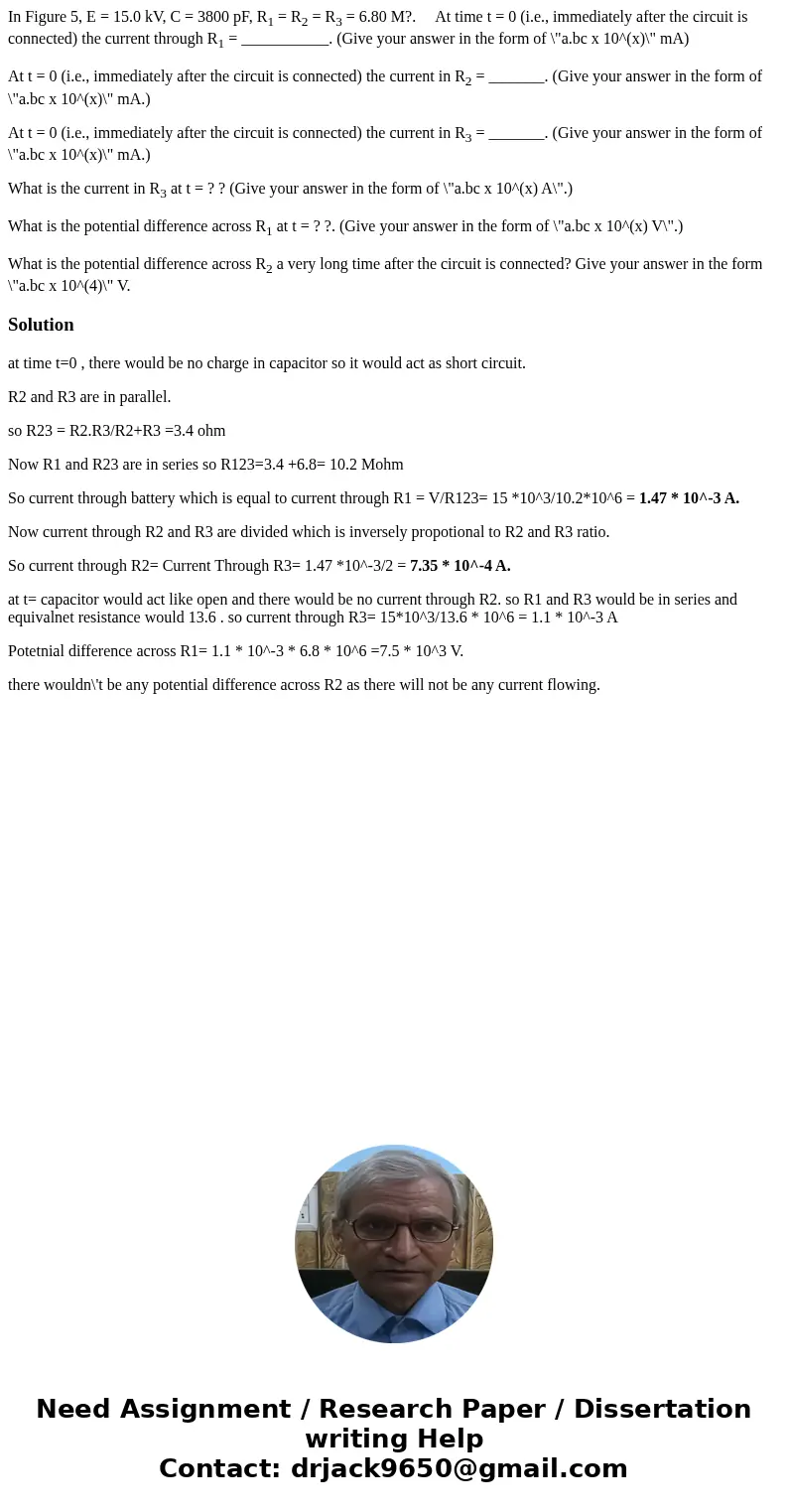In Figure 5 E 150 kV C 3800 pF R1 R2 R3 680 M At time t
In Figure 5, E = 15.0 kV, C = 3800 pF, R1 = R2 = R3 = 6.80 M?. At time t = 0 (i.e., immediately after the circuit is connected) the current through R1 = ___________. (Give your answer in the form of \"a.bc x 10^(x)\" mA)
At t = 0 (i.e., immediately after the circuit is connected) the current in R2 = _______. (Give your answer in the form of \"a.bc x 10^(x)\" mA.)
At t = 0 (i.e., immediately after the circuit is connected) the current in R3 = _______. (Give your answer in the form of \"a.bc x 10^(x)\" mA.)
What is the current in R3 at t = ? ? (Give your answer in the form of \"a.bc x 10^(x) A\".)
What is the potential difference across R1 at t = ? ?. (Give your answer in the form of \"a.bc x 10^(x) V\".)
What is the potential difference across R2 a very long time after the circuit is connected? Give your answer in the form \"a.bc x 10^(4)\" V.
Solution
at time t=0 , there would be no charge in capacitor so it would act as short circuit.
R2 and R3 are in parallel.
so R23 = R2.R3/R2+R3 =3.4 ohm
Now R1 and R23 are in series so R123=3.4 +6.8= 10.2 Mohm
So current through battery which is equal to current through R1 = V/R123= 15 *10^3/10.2*10^6 = 1.47 * 10^-3 A.
Now current through R2 and R3 are divided which is inversely propotional to R2 and R3 ratio.
So current through R2= Current Through R3= 1.47 *10^-3/2 = 7.35 * 10^-4 A.
at t= capacitor would act like open and there would be no current through R2. so R1 and R3 would be in series and equivalnet resistance would 13.6 . so current through R3= 15*10^3/13.6 * 10^6 = 1.1 * 10^-3 A
Potetnial difference across R1= 1.1 * 10^-3 * 6.8 * 10^6 =7.5 * 10^3 V.
there wouldn\'t be any potential difference across R2 as there will not be any current flowing.

 Homework Sourse
Homework Sourse